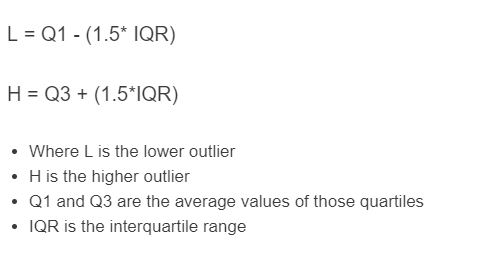Enter the average value of Q1 and Q3 and the interquartile range into the calculator to determine the low and high outliers.
Outlier Formula
The following equation can be used to calculate the values of the outliers.
L = Q1 - (1.5* IQR)
H = Q3 + (1.5*IQR)
- Where L is the lower outlier
- H is the higher outlier
- Q1 and Q3 are the average values of those quartiles
- IQR is the interquartile range
Outlier Definition
An outlier is defined as the extreme values of a set of data that vary the most from the mean or norm.
FAQ
What is the Interquartile Range (IQR)?The Interquartile Range (IQR) is a measure of statistical dispersion and is calculated as the difference between the third quartile (Q3) and the first quartile (Q1) in a data set. It represents the middle 50% of a data set.
How do you calculate the lower and higher outliers?The lower outlier is calculated by subtracting 1.5 times the IQR from the first quartile (Q1), and the higher outlier is calculated by adding 1.5 times the IQR to the third quartile (Q3).
Why are outliers important in statistical analysis?Outliers are important because they can significantly affect the results of statistical analyses. They can skew the data, leading to inaccurate conclusions. Identifying and understanding outliers is crucial for accurate data interpretation.

